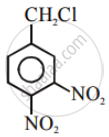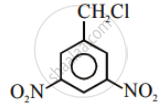Advertisements
Advertisements
प्रश्न
Inversion of configuration occurs in ______.
विकल्प
SN2 reaction
SN1 reaction
Neither SN2 nor SN1 reaction
SN1 as well as SN2 reaction
उत्तर
Inversion of configuration occurs in SN1 as well as SN2 reaction.
Explanation:
In the SN1 reaction, both resented and inverted products are generated, whereas, in the SN2 reaction, only the inverted product is formed.
APPEARS IN
संबंधित प्रश्न
Write the main products when methyl chloride is treated with AgCN.
Given reasons: C–Cl bond length in chlorobenzene is shorter than C–Cl bond length in CH3–Cl.
What are ambident nucleophiles? Explain with an example.
The treatment of alkyl chlorides with aqueous KOH leads to the formation of alcohols but in the presence of alcoholic KOH, alkenes are major products. Explain.
What is the action of the following on ethyl bromide?
moist silver oxide
2-Bromopentane is heated with potassium ethoxide in ethanol. The major product obtained is ____________.
Which of the following is the definition of chirality?
The major product formed in the following reaction is:

The decreasing order of reactivity of the following compounds towards nucleophilic substitution (SN2) is ______.
The following questions are case-based questions. Read the passage carefully and answer the questions that follow:
|
Nucleophilic Substitution: Influences of solvent polarity: The reaction rate (SN2) of 2-bromopropane and NaOH in ethanol containing 40% water is twice slower than in absolute ethanol. Hence the level of solvent polarity has an influence on both SN1 and SN2 reactions but with different results. Generally speaking, a weak polar solvent is favourable for SN2 reaction, while a strong polar solvent is favourable for SN1. Generally speaking, the substitution reaction of tertiary haloalkane is based on SN1 mechanism in solvents with a strong polarity (for example ethanol containing water). |
Answer the following questions:
(a) Why racemisation occurs in SN1? (1)
(b) Why is ethanol less polar than water? (1)
(c) Which one of, the following in each pair is more reactive towards SN2 reaction? (2)
(i) CH3 – CH2 – I or CH3CH2 – Cl
(ii)

OR
(c) Arrange the following in the increasing order of their reactivity towards SN1 reactions: (2)
(i) 2-Bromo-2-methylbutane, 1-Bromo-pentane, 2-Bromo-pentane
(ii) 1-Bromo-3-methylbutane, 2-Bromo-2-methylbutane, 2-Bromo-3- methylbutane




